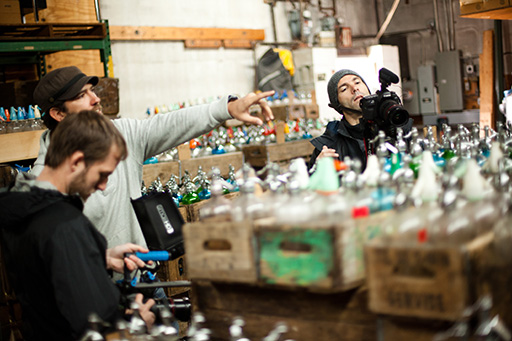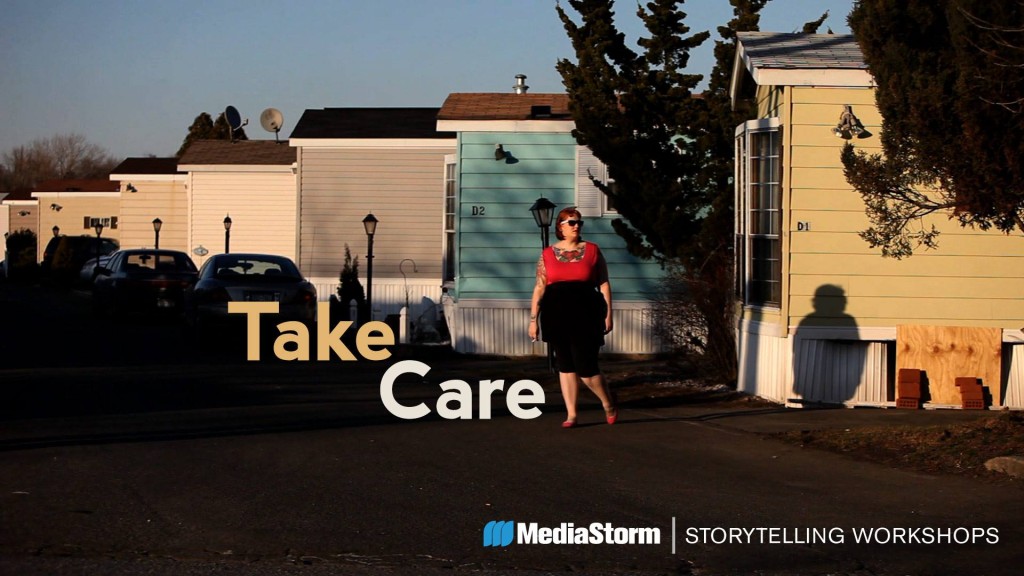Senior Producer Eric Maierson’s post “I Hate ‘Multimedia’” stirred up a discussion on what success in our industry looks like and what is required to get us there. We used your comments and questions to ask our Executive Producer and Founder Brian Storm (with thoughts from Director of Photography Rick Gershon) how visual storytellers can flourish in a constantly evolving industry.
Do you hate ‘multimedia’ too?
Hate is a strong word, but I would argue that word has become meaningless. It’s sort of like saying “awesome.” What does awesome mean anymore? Everything is awesome.
Multimedia has been associated with my professional title for twenty years of my life. So, of course, the word means something to me. What I’ve seen happen is that it means something different to everyone you talk to. Eric made a bunch of good points about it being too small in scope. It’s about our industry, the way our industry talks about it.
Our audience is much larger than those in the photography industry so multimedia isn’t a word that makes much sense to them. Also, the word multimedia has been used to represent the concept of a one man band. That is an approach that we really don’t believe is set up for success. The one man band is about keeping costs low, not about creating the best story possible. We believe in collaboration and teamwork to tell stories. For us, it’s about storytelling and quality above all else.
Is it more important for storytellers to be an expert at one medium or familiar with multiple?
When you’re starting out you should work towards a broad education. Get exposed to all the various skills so you can respect how hard each are and better understand the role each media type and skill set can play in the storytelling process.
But, I think if you want to be great, you have to pick something that you’re passionate about and really make it your craft. Become exceptional at it. And from there you should collaborate with people who are exceptional at those things that you are not. That’s how you become excellent in this space. No one person can do all the things that make a great film.

What aspect of filmmaking do you find photographers struggle with most?
Sound. They’re already gifted visually. Sound is critical to a great film and is the gateway drug to successful video. I wrote a piece on how and why photographers should do sound many years ago. For twenty years I have been trying to convince photographers: don’t go straight to shooting video. Start with a focus on gathering good sound. Because with your still pictures and sound you can make a film. And that concept was the genesis of the whole company.
Still photographers often struggle when they first move to video with shooting for sequence – the idea of wide, medium, close-up, extreme close-up. The need for action, reaction and cutaway shots. Still photographers don’t always shoot that way, but these are the shots you need to build a compelling scene. Still photographers are shooting for a decisive moment and shooting for sequence is something that requires a different approach.
As Rick Gershon says, “It’s no longer just capturing the decisive moment but a series of moments linked together through meaningful transitions. It’s a different storytelling skill altogether. With video you’re portraying the total impact of a scene in time that’s unfolding in front of you whereas with stills you are freezing a single moment that is to represent the whole of the scene.”
Our workshops and online training have a major focus on helping storytellers master these techniques.
Some have pointed out that MediaStorm is shifting away from still images in favor of video, even adding motion graphics to the mix. Why the change in direction?
Well, I don’t fully agree with that. We have projects in production right now that are powerful still photography projects. But even with those projects we’re asking for video to be added because it does a lot for you in terms of completing a story. Video helps cover time in narration. If you shoot three really great still pictures of a scene, that’s going to cover 15 seconds a piece. If you spend that same time shooting sequences with video you’ll cover 90 seconds of narrative. Video just does a better job of covering more narration. I wouldn’t say it’s more or less powerful. A really fine still picture can sear into your brain and stick with you for a long time. It’s really about using a combination of them and leveraging the strengths they each have to offer.
We do have a very focused effort with motion graphics emerging with our latest projects thanks to the addition of the talented Joe Fuller. He has done an amazing job of advancing our capabilities in this area and I’m excited about what this means to our overall ability to tell important stories.
When does photography surpass video for storytelling? When does video surpass photography?
We look at what we have. We’re usually delivered a set of assets that includes both stills and video. And we pick the media type that best tells the story. When we’re shooting original stories now Rick tends to focus on shooting video. Video covers time in a much more efficient way. And it’s hard to make great still pictures, especially in a short amount of time. It takes more time, and you need a lot of them. When you look at the projects we work with still photographers on, they’ve often spent many years documenting an issue. They spend an enormous amount of time going for those decisive moments and that’s why their work is so unique. But if we’re given only a week to go cover an issue we are going to shoot video. It’s just more efficient.
Rick says, “Still photography has what is called the “poster” effect. And we actually think this way. When you think about the majors events of history that you have witnessed you remember one image or a series of images that were burned into your mind. This is a very powerful effect. It’s also important to note that there is much more room for interpretation and subjectivity in photography. You don’t have the context of what was happening around that moment and what it sounded like. That leaves a lot up to interpretation.
Video has more of a “total” effect and is better for presenting things in real time. It’s much more about a mood and feeling that is created through a scene and ultimately a piece. After watching a motion piece a single image isn’t really burned into your mind like it is with a still picture. Rather the impact is a feeling and a mood and you can remember what a scene was about and the feeling and emotion it put forth. Video also has a ton of power in providing visual evidence of how an issue or idea unfolds in real life. The unfolding progression of events doesn’t happen in a still photograph. Maybe in a series of stills but it’s not the same as video because video is in real time. Stills compress time into one image and are better when not limited to time.”

Do audiences respond differently to photo-driven stories versus video?
I don’t think our audience looks at it that way. I think our audience thinks about: Is this a compelling story? Did I learn something from it? Am I inspired? Am I called to action? Do I care? That’s not about a media type. That’s about storytelling. And story is always our focus.
The bottom line is to continue to learn every single day. Be open to new tools that will help you be a better storyteller. You never really arrive. You’re never done. You’re never to the point where you’re like, “I have mastered great sound. I have mastered the art of photojournalism. I have mastered my ability to shoot cinematic sequences.” It’s a journey. It’s not like one day you say, “I got it.” As soon as you get to a place where you think you have something figured out there are new challenges. It never ends. And, ultimately, that’s why it’s fun.

